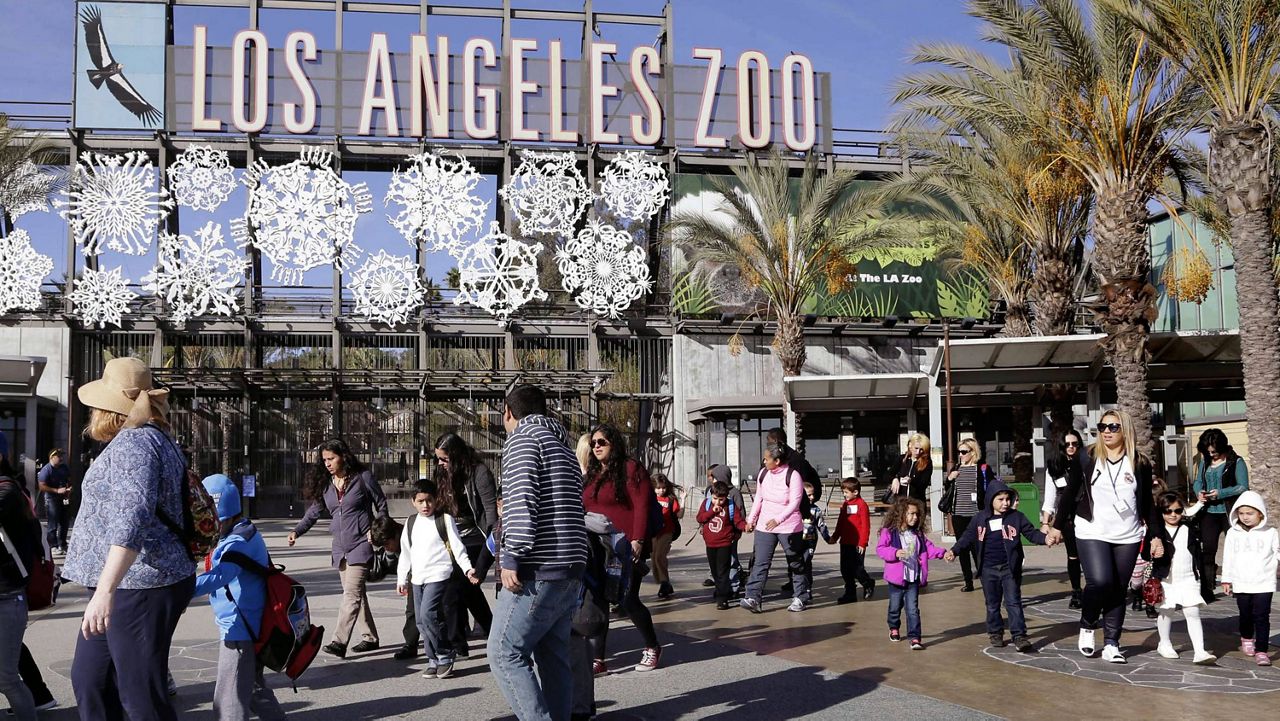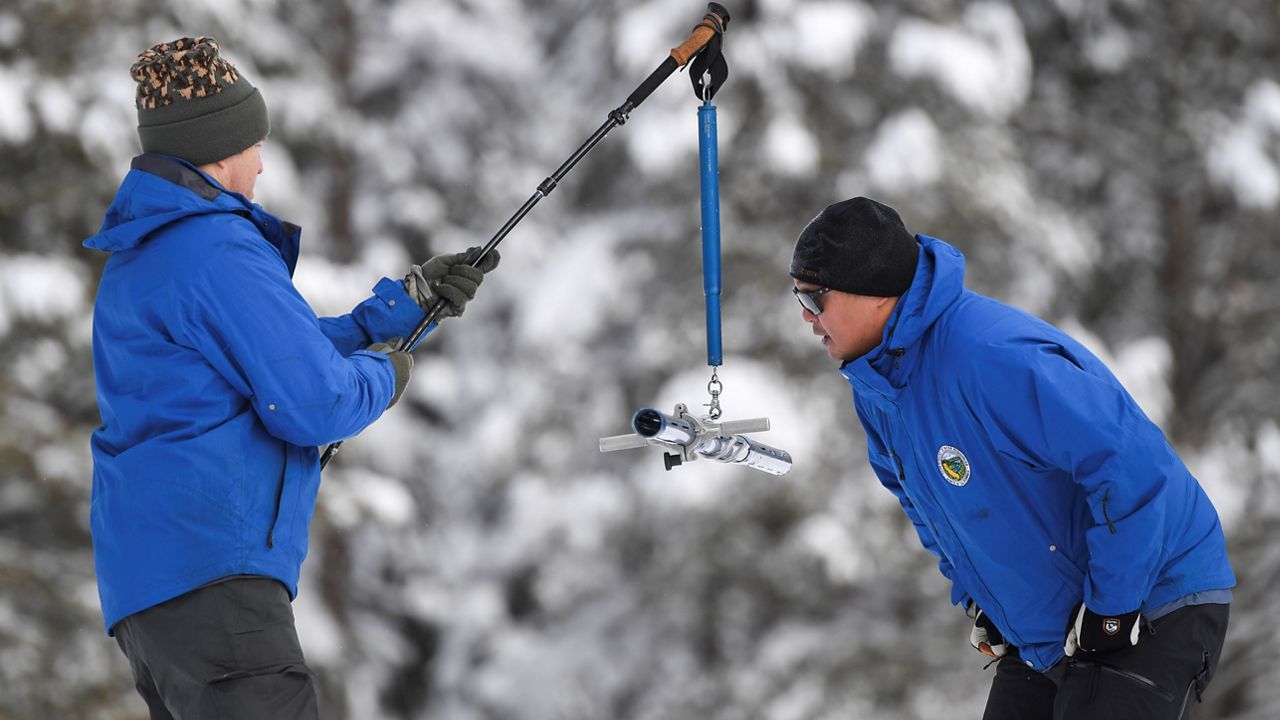GRIFFITH PARK, Calif. — Los Angeles is embarking on an ambitious mission to preserve biodiversity. On Thursday, the LA Zoo launched its first-ever Conservation Strategic Plan in the hopes it can help slow the breakneck speed of species die-offs both locally and around the world.
“We are witnessing the sixth mass extinction in earth’s 4.5-billion-year history,” LA Zoo Director of Conservation Dr. Jake Owens said during a webinar introducing the plan.
Noting that the current extinction rate is 1,000 times higher than it would be without humans contributing to species loss, he added, “Here in California, sea level rise, increased droughts, rising temperatures and other threats put our people, wildlife and ecosystems at high risk.”
In response, the zoo intends to leverage its 42,000 members and 2 million annual visitors as it refocuses its mission. Now, in addition to being a place where people can see more than 1,400 creatures up close, the zoo will prioritize the protection of animals, plants and habitats while at the same time advancing social and environmental justice.
The LA Zoo Conservation Strategic Plan “moves Los Angeles closer to our goal of building a more inclusive and sustainable world,” LA Mayor Eric Garcetti said during the plan’s unveiling.
In the works for a year, the new plan is part of the Green New Deal Los Angeles adopted in 2019 to combat climate change in a way that prioritizes disadvantaged communities. It focuses on six areas where the zoo believes it can have the greatest impact.
Recognizing that the communities most affected by climate issues are also the ones that have the least representation in environmental leadership, the zoo plans to expand a new paid conservation internship program it recently launched for people of color. It also plans to work with juvenile offenders “to create alternatives to detention that not only benefit species recovery programs but help develop connections with nature and new career outlooks,” Owens said.
California is home to 1,295 native plant and animal species that can only be found in the Golden State, so the zoo is ramping up its efforts to protect them. Owens said the California Condor is an example of a species that continues to exist largely because of the zoo’s efforts to hatch and raise them for release in the wild. In the early 1980s, there were just 22 wild condors; today there are more than 300.
One of the key priorities for the zoo is to develop a Griffith Park Conservation Consortium to bring together stakeholders to form new partnerships so they can accelerate change. Owens said working with local universities to study the impacts of climate change on migratory birds could speed up efforts to help them.
The illegal trade of wildlife puts added pressure on species that are already threatened with extinction from habitat loss and climate change. “Countless species are being unsustainably hunted for consumption, medical use, the pet trade and other purposes,” Owens said. “Contrary to popular belief, this trade is rampant in the United States.”
The LA Zoo is often tasked with helping to identify and then care for animals that have been confiscated by authorities at the Port of Los Angeles and Los Angeles International Airport, including endangered species. Between 2015 and 2019, the U.S. Fish and Wildlife Service processed 834 cases of live wildlife that were refused clearance into the U.S. and were seized or abandoned, including almost 49,000 live specimens, Owens said.
The LA Zoo already works with a group called the Southern California Confiscations Network to combat the illegal pet trade and plans to become more involved with other local groups to develop solutions to reduce demand.
Several species exist in the wild today solely because they were bred in places like the LA Zoo and released back into nature, Owens said. The zoo’s conservation translocations have helped revive the populations of California Condors, Peninsula Pronghorns and the Southern Mountain Yellow Legged Frog. Going forward, the zoo intends to work with LA Sanitation and Environment to identify target species for release into local habitats.
One of the zoo’s greatest international involvements is with programs designed to reduce conflicts between humans and animals. For more than a decade, the LA Zoo has worked with programs in Sri Lanka and Cambodia to prevent elephant deaths that are often caused when the pachyderms wander onto farms searching for food.
More recently, the zoo has been working with a Colorado-based technology NGO called Wildlife Protections Solutions and a nonprofit in Borneo to test an early alert system. Using real-time camera trap monitors, local rangers are notified when elephants are headed out of the forest and towards crops to stop conflicts before they can occur.
Almost 19,000 of the 134,000 species included on the IUCN Red List, the world’s most comprehensive inventory of threatened animals, do not have enough information available to determine how close they are to extinction, Owens said. Already, the LA Zoo is involved with the Wildlife Trust of India and other groups to conduct field studies that track changes in species populations and to identify priorities to prevent their endangerment.
Going forward, it intends to use its location in Griffith Park to study the conservation of native wildlife in urban settings to improve local outcomes for species that might be at risk closer to home in the hopes it can serve as a model for other urban parks around the country and even globally.










